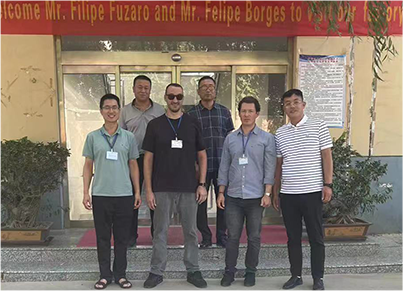
Nov . 27, 2024 06:18 Back to list
Suppliers of Rutile and Anatase Titanium Dioxide for Various Applications
The Market for Rutile and Anatase TiO2 Key Suppliers and Trends
Titanium dioxide (TiO2) is a widely used white pigment known for its brightness and high refractive index. It is predominantly available in two crystalline forms rutile and anatase. Both forms have unique properties and applications, which influence their market demand and supply dynamics. In this article, we will explore the characteristics of rutile and anatase TiO2, their uses, and highlight some key suppliers in the industry.
Understanding Rutile and Anatase TiO2
Rutile TiO2 is the more stable and dense form, possessing superior pigmentary performance compared to anatase. Its higher opacity and better UV resistance make it ideal for applications in paints, coatings, plastics, and even in cosmetic products. Rutile is often the preferred choice for applications requiring durability and long-lasting performance.
Anatase TiO2, on the other hand, while less stable, offers certain advantages in specific contexts. It is often used in photocatalytic applications, such as self-cleaning surfaces, due to its higher photocatalytic activity under UV light. Moreover, anatase can be utilized in specialized coatings and electronic devices due to its semiconductor properties. However, due to its lower opacity, it is typically not used where high pigment intensity is needed.
Growth in Demand
The global demand for both forms of TiO2 has been on the rise, driven by advancements in technology and an increasing necessity for sustainable products. The paint and coatings industry remains the largest consumer of TiO2, accounting for approximately 60% of total consumption. As the automotive, construction, and infrastructure sectors grow, the need for high-quality coatings that offer protection and aesthetics is expected to increase.
Moreover, the rise of eco-friendly products is also prompting the use of TiO2 in more innovative areas, such as green energy technologies. Its application in solar cells and as a photocatalyst for pollutant degradation underscores its versatility and the ongoing transition towards sustainable solutions. Consequently, suppliers are keenly focusing on both forms of TiO2 to cater to diverse demands.
Key Suppliers of Rutile and Anatase TiO2
rutile and anatase tio2 suppliers

The titanium dioxide market is characterized by several key players, including both multinational corporations and specialized manufacturers
. Leading suppliers include1. Huntsman Corporation A globally recognized player, Huntsman produces high-quality rutile and anatase TiO2, focusing on various industrial applications, including automotive and coatings.
2. Chemours Known for its Ti-Pure™ brand, Chemours is one of the largest players in the TiO2 space. They provide extensive product options in both rutile and anatase forms, catering to different market needs.
3. Tronox Holdings This company is another significant supplier of TiO2, offering a range of grades suitable for coatings and plastics. Their focus on sustainability aligns well with current market trends.
4. Kronos Worldwide With a comprehensive portfolio of TiO2 products, Kronos serves diverse industries, emphasizing innovative solutions for its clients' needs.
5. Lomon Billions As one of the largest producers in China, Lomon Billions has a strong presence in the TiO2 market, offering both rutile and anatase grades with a focus on domestic and international markets.
Conclusion
The market for rutile and anatase TiO2 is dynamic and continuously evolving as industries seek more efficient and sustainable materials. With a wealth of applications across various sectors, the demand for titanium dioxide will likely keep growing. As technological advancements enhance the versatility of both rutile and anatase, suppliers will need to adapt, ensuring they meet the changing requirements of the market while maintaining high-quality production standards. The future of TiO2 looks promising, with key suppliers playing a vital role in shaping the industry landscape.
-
China Lithopone in China Supplier – High Quality Lithopone ZnS 30% Powder for Wholesale
NewsJun.10,2025
-
Top China Titanium Dioxide Company – Premium TiO2 Powder Supplier & Manufacturer
NewsJun.10,2025
-
Fast Shipping 99% Pure TiO2 Powder CAS 13463-67-7 Bulk Wholesale
NewsJun.10,2025
-
Top China Titanium Dioxide Manufacturers High-Purity R996 & Anatase
NewsJun.10,2025
-
Lithopone MSDS Factories - Production & Quotes
NewsJun.10,2025
-
High-Quality Titanium Dioxide in Water Suppliers - China Expertise 60
NewsJun.09,2025
